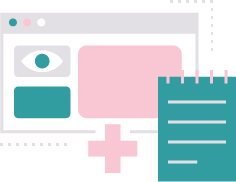November 17, 2020
Interoperability is one of healthcare’s biggest challenges and greatest collective initiatives. It’s something that all parties see as a priority — from patients and health systems to clinicians and governments. The discourse surrounding healthcare interoperability evolves regularly, but one thing is clear: interoperability is a must have in the future of healthcare.
The language surrounding interoperability has changed since 2013 when HIMSS first established the definition. Today, the global thought leader defines it is as follows:
It is the ability of different information systems, devices and applications (systems) to access, exchange, integrate and cooperatively use data in a coordinated manner, within and across organizational, regional and national boundaries, to provide timely and seamless portability of information and optimize the health of individuals and populations globally.
Key Benefits of Interoperability

Productivity

Cost reduction

Improved public health data

Error reduction

Security

Patient experience
The benefits of interoperability are well documented. But years later, interoperability is still a major challenge. With so many parties involved, finding interoperability solutions that appease everyone is difficult, to say the least. In 2019, the HHS Office of the National Coordinator for Health Information Technology (ONC) prepared a report that detailed the primary challenges of achieving interoperability in healthcare: technical barriers, financial barriers, trust barriers, administrative requirements, reporting requirements, and IT usability. In order to improve ongoing interoperability initiatives, organizations can consider a few key strategies.

Artificial Intelligence
At this point in AI’s existence, it has been thrown around as a solution to a number of problems. AI solutions of course are complex, but the overarching benefits could clearly lead to improved healthcare data interoperability. For starters, machines are incredibly consistent. The lack of consistency is one of the most glaring barriers to improved interoperability. That same consistency results in reduction of error, which is a key benefit of interoperability. AI is an incredible tool, and organizations that learn how to leverage it will come out ahead.

Ambitious Goal Setting
The healthcare industry, full of its red tape and regulatory needs, moves slow. Despite the challenges, healthcare’s typical pace should no longer be an option. We’re seeing many organizations taking steps toward a future that allows patients, health systems, and clinicians to interact more seamlessly, but interoperability cannot wait another decade. Leaders who set ambitious goals and then engage with other leaders might be surprised by what’s actually possible.

Audit and Update Internal Data Systems
Since interoperability took center stage, IT professionals have gained priceless experience and insights into system and technological challenges. EHRs, imaging software, staffing systems, claims, and more are often disparate, leading to bottlenecks that affect patients and providers alike. It also prevents healthcare leaders from leveraging consistent insights to make better business decisions. An audit with a healthcare IT professional will allow healthcare organizations to identify opportunities to update and standardize for interoperability.

Patient-Centricity
As we’ve said, there are multiple parties who are part of the interoperability conversations. While each must absolutely be considered in decision making, it is important to keep the patient at the center of the conversations. As time goes by, patients will continue to become more engaged and more empowered in their healthcare decisions. By including the patient in the conversation, that perspective can be leveraged to make better business decisions, and ultimately a healthcare industry that prioritizes interoperability.
